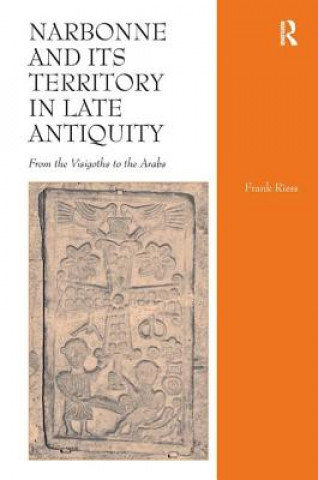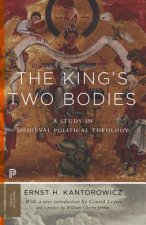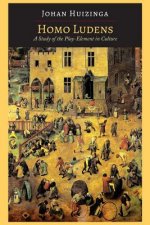
Kód: 04783632
Narbonne and its Territory in Late Antiquity
Autor Frank Riess
This work centres on the post-Roman period of Narbonne and its territory, up to its capture by the Arabs in 720, encompassing not only recent archaeological findings but also perspectives of French, Spanish and Catalan historiogra ... celý popis
- Jazyk:
 Angličtina
Angličtina - Vazba: Pevná
- Počet stran: 304
Nakladatelství: Taylor & Francis Ltd, 2013
- Více informací o knize

Mohlo by se vám také líbit
-

Butter Wouldn't Melt
494 Kč
Dárkový poukaz: Radost zaručena
- Darujte poukaz v libovolné hodnotě a my se postaráme o zbytek.
- Poukaz se vztahuje na celou naši nabídku.
- Elektronický poukaz vytisknete z e-mailu a můžete ihned darovat.
- Platnost poukazu je 12 měsíců od data vystavení.
Více informací o knize Narbonne and its Territory in Late Antiquity
Nákupem získáte 471 bodů
 Anotace knihy
Anotace knihy
This work centres on the post-Roman period of Narbonne and its territory, up to its capture by the Arabs in 720, encompassing not only recent archaeological findings but also perspectives of French, Spanish and Catalan historiography that have fashioned distinct national narratives. Seeking to remove Narbonne from any subsequent birth of France, Catalonia and Spain, the book presents a geopolitical region that took shape from the late fifth century, evolving towards the end of the eighth century into an autonomous province of the nascent Carolingian Empire. Capturing this change throughout a 300-year period somewhat lacking in written sources, the book takes us beyond an exclusive depiction of the classical city to an examination of settlement in various forms. Discourses of literary criticism also lie behind aspects of this study, mapped around textual commentaries which highlight a more imaginative biography of a city.Narbonne's role as a point of departure and travel across the Mediterranean is examined through a reading of the correspondence of Paulinus of Nola and the writings of Sulpicius Severus, enabling the reader to gain a fuller picture of the city and its port. The topography of Narbonne in the fifth century is surveyed together with Bishop Rusticus's church-building programme. Later chapters emphasise the difficulties in presenting a detached image of Narbonne, as sources become mainly Visigothic, defining the city and its region as part of a centralised kingdom. Particular attention is given to the election of Liuva I as king in Narbonne in 568, and to the later division into upper and lower sub-kingdoms shared by Liuva and his brother Leovigild, a duality that persisted throughout the sixth and seventh centuries. The study therefore casts new light on Narbonne and its place within the Visigothic Kingdom of Toledo, suggesting that it was the capital of a territory with roots in the post-Roman settlement of barbarian successor states.
 Parametry knihy
Parametry knihy
Zařazení knihy Knihy v angličtině Humanities History History: earliest times to present day
4705 Kč
- Plný název: Narbonne and its Territory in Late Antiquity
- Autor: Frank Riess
- Jazyk:
 Angličtina
Angličtina - Vazba: Pevná
- Počet stran: 304
- EAN: 9781409455349
- ISBN: 1409455343
- ID: 04783632
- Nakladatelství: Taylor & Francis Ltd
- Hmotnost: 692 g
- Rozměry: 237 × 173 × 24 mm
- Datum vydání: 31. October 2013
Oblíbené z jiného soudku
-

Learn to Read Ancient Sumerian
789 Kč -

Russian Journal
357 Kč -

King's Two Bodies
683 Kč -

Heart of Europe
517 Kč -

Armies of Castile and Aragon 1370-1516
442 Kč -

One Hell of a Gamble
677 Kč -

Rise and Fall of Ancient Egypt
464 Kč -

Guns, Germs, and Steel
298 Kč -

The Origins of Totalitarianism
276 Kč -

Illustrated Encyclopedia of Uniforms of World War I
543 Kč -

The Art of Combat
880 Kč -

On Tyranny
276 Kč -

Homo Ludens
305 Kč -

Tuesdays With Morrie
276 Kč -

History of the Decline and Fall of the Roman Empire
357 Kč -

King Leopold's Ghost
303 Kč -

Meditations
217 Kč -

Streams of Gold, Rivers of Blood
775 Kč -

Travels of Ibn Battutah
303 Kč -

Augustus
410 Kč -

Age Of Capital
410 Kč -

Egyptian Book of the Dead: The Book of Going Forth by Day : The Complete Papyrus of Ani Featuring Integrated Text and Full-Color Images (History ... M
679 Kč -

Deng Xiaoping and the Transformation of China
787 Kč -

Age Of Extremes
407 Kč -

John Skylitzes: A Synopsis of Byzantine History, 811-1057
970 Kč -

Arms and Armour of Late Medieval Europe
276 Kč -

Alexander the Great
382 Kč -

End of Days
196 Kč -

Shake Hands With The Devil
357 Kč -

Complete Roman Army
543 Kč -

Distant Mirror
357 Kč -

Fall of the Roman Empire
614 Kč -

Fifties
485 Kč -

After the Ice
464 Kč -

Histories
136 Kč -

Savage Continent
410 Kč -

Oxford IB Diploma Programme: The Cold War: Superpower Tensions and Rivalries Course Companion
1474 Kč -

Age Of Empire
410 Kč -

Pompeii
303 Kč -

Life in a Cave
177 Kč -

Oxford Illustrated History of Prehistoric Europe
874 Kč -

On the Ocean
937 Kč -

Flowers of Battle The Complete Martial Works of Fiore dei Liberi Vol 1
3492 Kč -

On Ancient Warfare
1017 Kč -

Access to History for the IB Diploma: Causes and effects of 20th-century wars Second Edition
908 Kč -

Safe Area Gorazde
517 Kč -

Yoga Body
456 Kč -

Fear and Loathing on the Campaign Trail '72
357 Kč -

Fall of Carthage
410 Kč
Osobní odběr Praha, Brno a 12903 dalších
Copyright ©2008-24 nejlevnejsi-knihy.cz Všechna práva vyhrazenaSoukromíCookies



 Vrácení do měsíce
Vrácení do měsíce 571 999 099 (8-15.30h)
571 999 099 (8-15.30h)